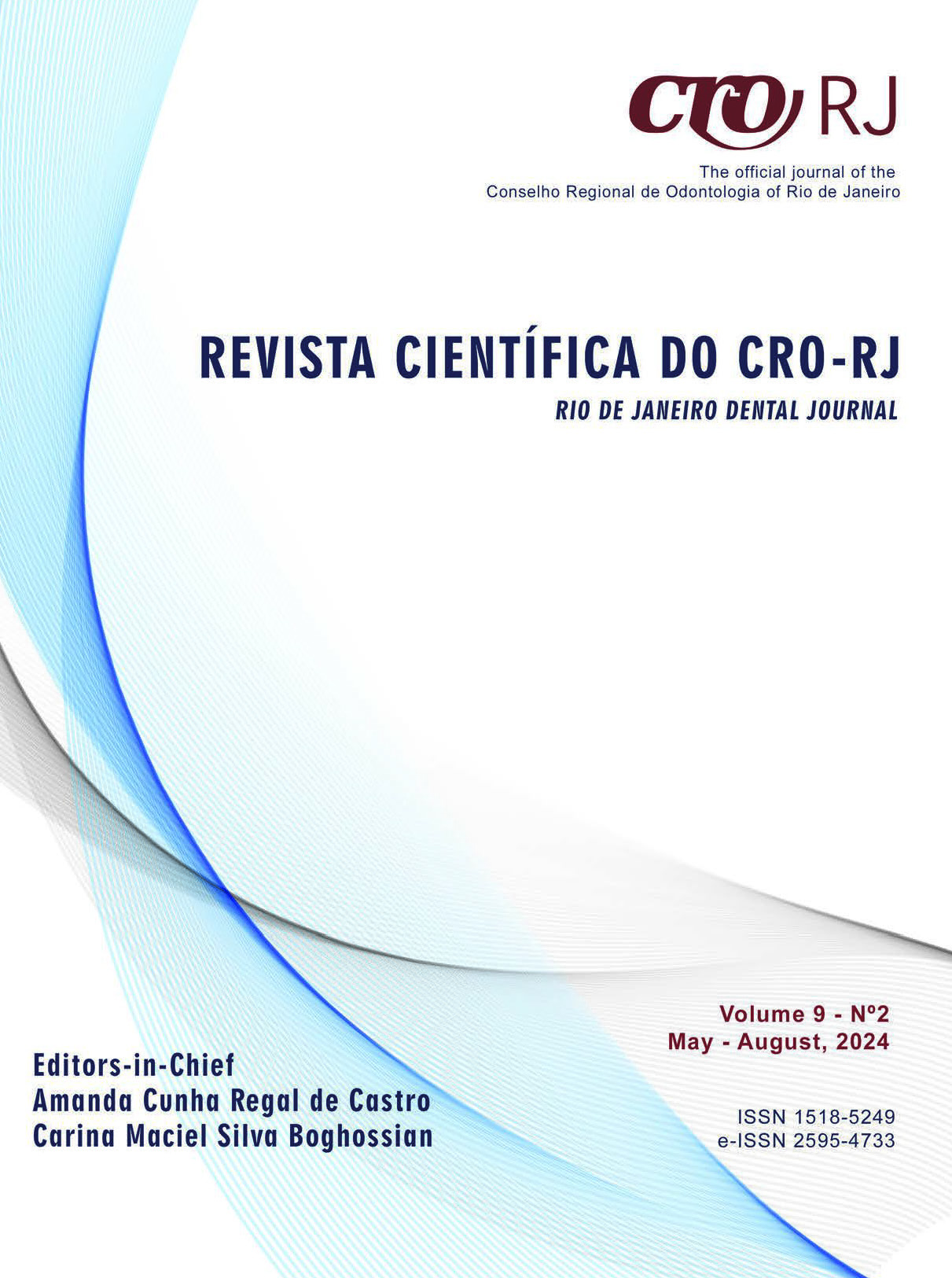REABILITAÇÃO ESTÉTICA E FUNCIONAL EM DENTES ANTERIORES COM MÚLTIPLOS DIASTEMAS COM FACETAS EM CERÂMICA – RELATO DE CASO CLÍNICO
Keywords:
Computer-Aided Design, Dental Esthetics, Case ReportAbstract
Introduction: The increasing demand for dental aesthetics and the restoration of masticatory function has led to advancements in materials and techniques, particularly the use of ceramic laminates in restorative dentistry. Objective: This study describes the rehabilitation of the upper anterior teeth (from 13 to 23) in a young male patient with multiple diastemas, using an indirect restorative technique with lithium disilicate- based ceramic veneers. The planning, clinical, and laboratory stages were carried out entirely through a digital workflow. Case report: The process began with tooth whitening using an in-office technique combined with at-home whitening. Initial photographs and intraoral scans were taken to facilitate digital planning (CAD). Study models were then printed (CAM), and addition silicone guides were created for the restorative mock-up and mapping of selective enamel wear. After patient approval, enamel reduction was performed, and a dental scan was conducted to create the ceramic veneers in the dental laboratory (CAM). The veneers were tested both dry and wet to evaluate marginal adaptation and to test the cement color. The operative field was isolated, and the veneers were adhesively cemented to the enamel using a light-curing resin cement. Results: The functional and aesthetic rehabilitation with ceramic laminates in a patient with multiple diastemas was successful, resolving the patient’s initial complaints. Conclusions: It was concluded that detailed planning and the choice of a minimally invasive restorative technique provided precision, clinical efficiency, and treatment longevity.
Downloads
Published
How to Cite
Issue
Section
License
Copyright (c) 2025 Revista Científica do CRO-RJ (Rio de Janeiro Dental Journal)

This work is licensed under a Creative Commons Attribution-NonCommercial-NoDerivatives 4.0 International License.


